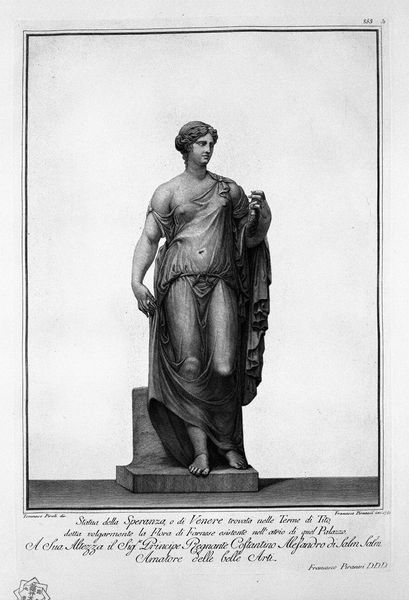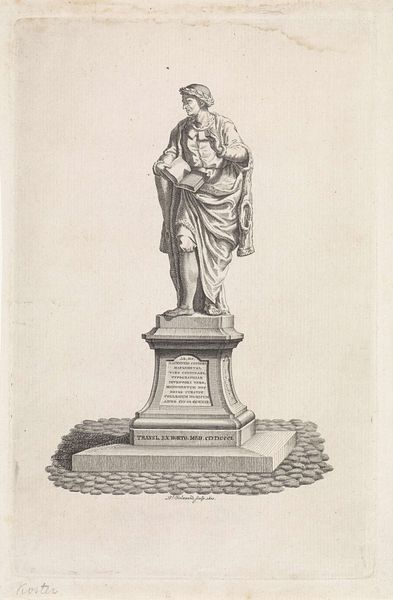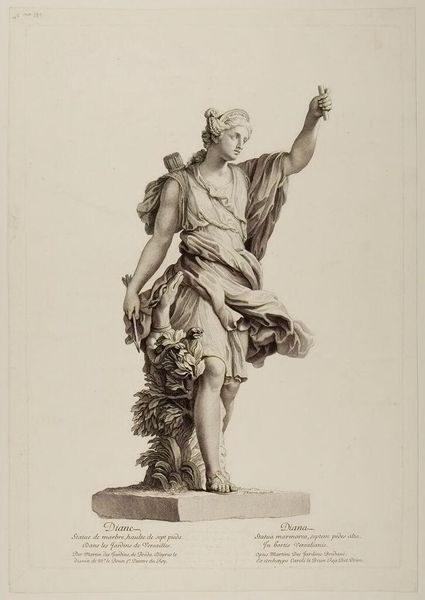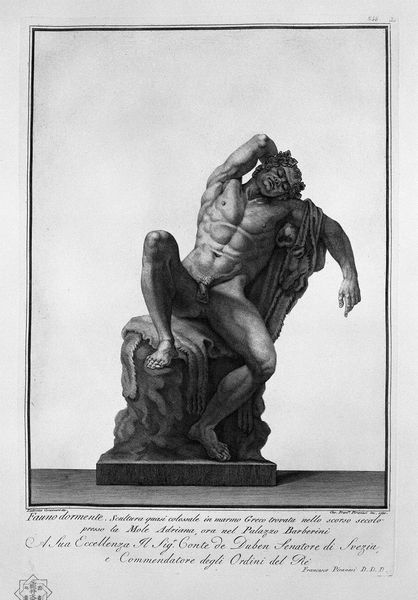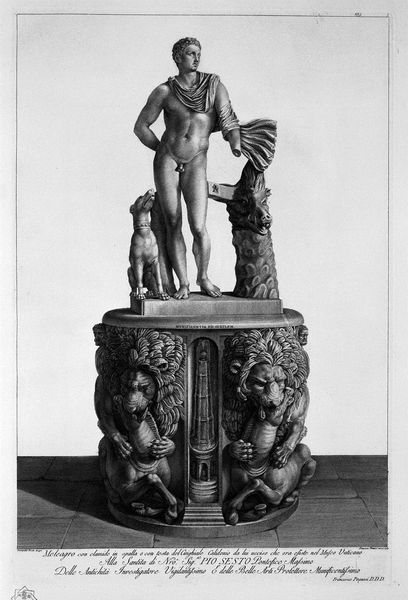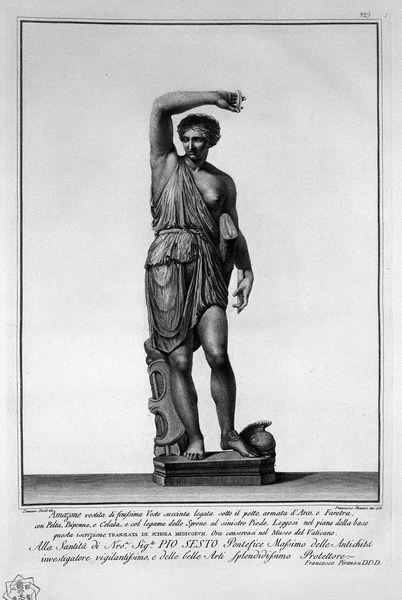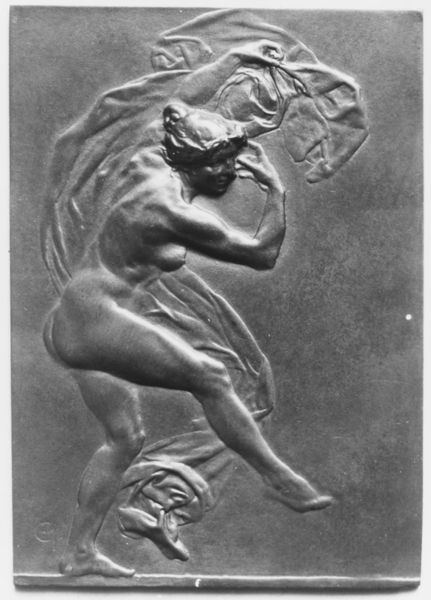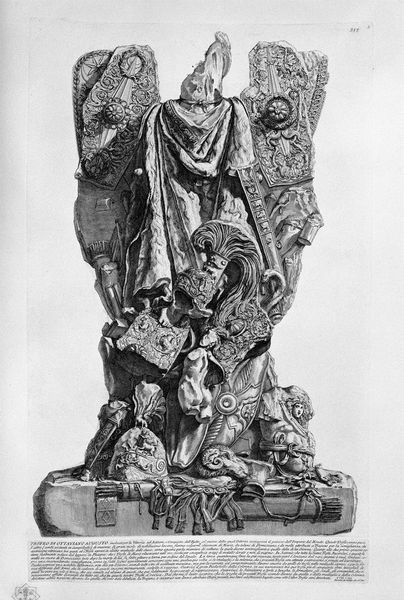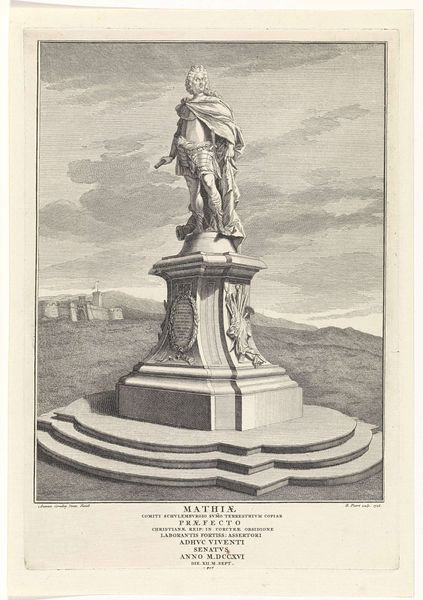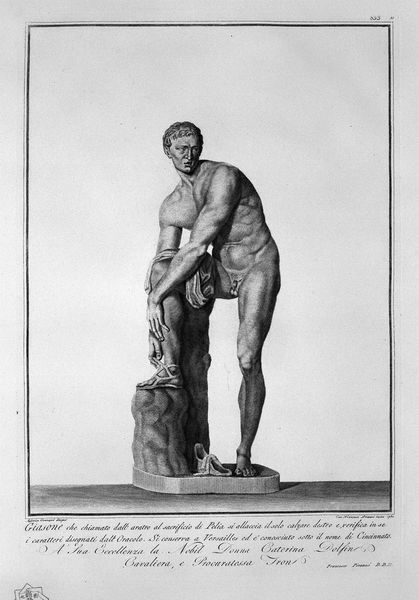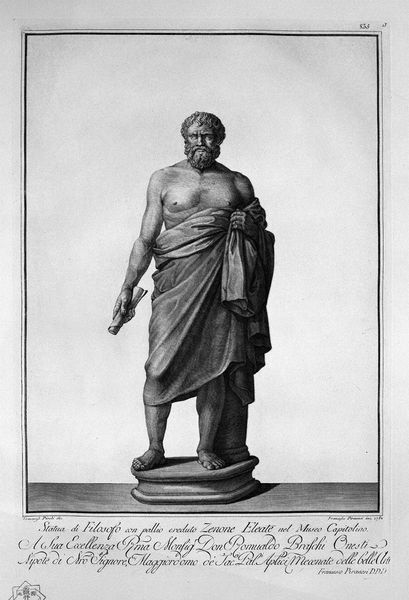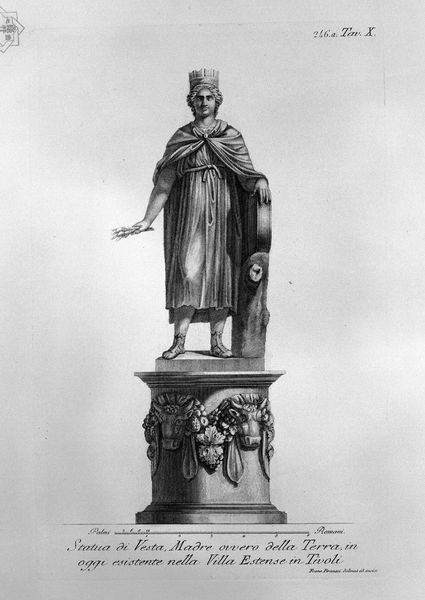
print, sculpture, engraving
#
portrait
#
neoclacissism
# print
#
sculpture
#
greek-and-roman-art
#
sculptural image
#
figuration
#
portrait reference
#
sculpture
#
men
#
history-painting
#
engraving
Copyright: Public domain
Editor: This engraving, titled "One of the Dioscuri of the Quirinal" by Giovanni Battista Piranesi, depicts a classical sculpture. The detail is incredible, especially the rendering of the muscles. The monumentality of it really comes across, even in print form. How do you interpret this work, especially within its historical context? Curator: It’s a powerful image, isn’t it? Piranesi, in my view, wasn't just documenting; he was participating in a dialogue about civic virtue and the role of the antique in shaping contemporary identity. These prints of Roman antiquities fed into the Neoclassical movement, where the "rediscovery" of Greece and Rome were promoted as models for governance and artistic innovation. Do you think viewers at the time saw this as purely academic? Editor: Probably not. I mean, this wasn’t just about showing off old statues, right? There must have been a statement about the social order that was being made through art. Curator: Precisely! These images functioned as propaganda, in a sense. Promoting the ideals of the Enlightenment, associating them with the glory of the past. Look at the idealized physique. How does that resonate with contemporary socio-political ideals? Editor: It’s suggesting strength, virtue… a sort of idealized masculinity linked to power and leadership, I guess. It is so interesting how one piece can connect to a whole movement and cultural values! Curator: Exactly! Piranesi uses visual imagery to embed and promote this. So what started as a print can show how historical ideals influence power and influence social beliefs! A great discovery, no?
Comments
No comments
Be the first to comment and join the conversation on the ultimate creative platform.

